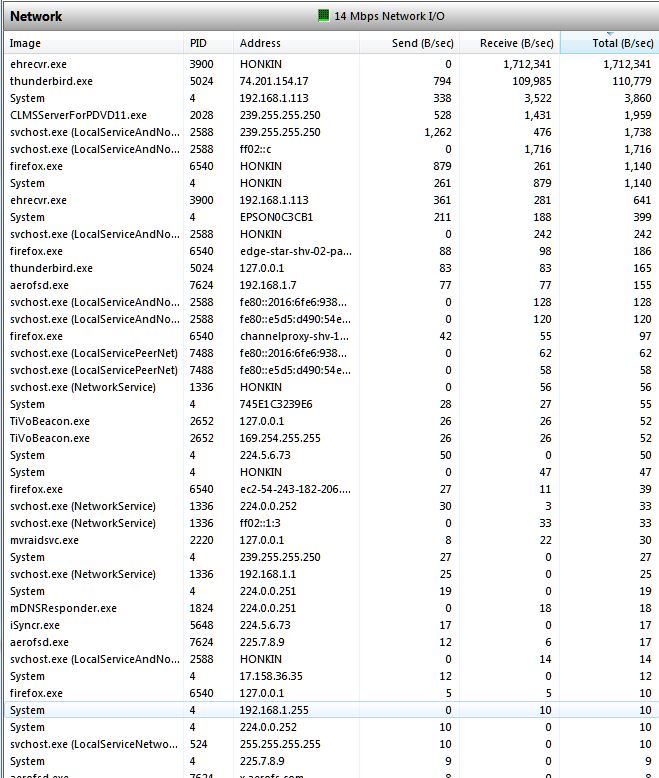Net Neutrality Advocates Score an Own Goal
 In soccer, an “own goal” is scoring a goal for the other team. In this connection, I recommend Jon Healey’s column in the LA Times on net neutrality objections to T-Mobile’s music streaming plan, Should net neutrality rules stop T-Mobile’s music streaming offer? Healey describes what appears to be a perfectly sensible plan to attract new customers:
In soccer, an “own goal” is scoring a goal for the other team. In this connection, I recommend Jon Healey’s column in the LA Times on net neutrality objections to T-Mobile’s music streaming plan, Should net neutrality rules stop T-Mobile’s music streaming offer? Healey describes what appears to be a perfectly sensible plan to attract new customers:
The music streaming offer from T-Mobile is the latest gambit. As of Wednesday, subscribers with data plans were able to use any of a dozen different online music services, including Pandora, Spotify, iTunes Radio and Rhapsody, without using any of their monthly data allotment. The offer aims squarely at the young adults who represent the biggest group of smartphone users. And smartphone users are the most coveted customers, given that data charges are the only part of the carriers’ business that’s growing.
And he notes objections to the plan from Public Knowledge, the self-styled public interest organization that’s collaborating with Netflix, Cogent, Dish, and SKDKnickerbocker to halt the Comcast/Time Warner Cable merger:
Michael Weinberg at Public Knowledge, a tech advocacy group, offered a different take on T-Mobile’s streaming deal Thursday.
“T-Mobile’s announcement that they will exempt a handful of music streaming services from their data cap is but the latest example of ISPs using data caps to undermine net neutrality,” Weinberg wrote in a blog post. Exempting some music services from the caps will make them more attractive to consumers than the services that aren’t exempted. “This type of gatekeeping interference by ISPs is exactly what net neutrality rules should be designed to prevent,” he added.
Net neutrality is intended to prevent some users from getting better deals than other users, gotcha.
That’s an interesting discussion that illustrates the downside of a neutral Internet. It’s not hypothetical, as Chile has enacted the kind of ban Public Knowledge seeks, pursuant to its net neutrality law:
The Chilean telecommunications regulator Subtel has banned mobile operators from offering so-called zero-rated social media apps – services like Twitter and Facebook that, through deals with the carriers, can be used without having to pay for mobile data. Subtel says such practices are illegal under Chilean net neutrality law.
I’d like to address a point Healey makes in passing that I’ve seen in many articles on net neutrality that doesn’t happen to be factual. Healey claims so-called “paid prioritization” has its own bad side effect:
Paid prioritization of traffic is hugely problematic because putting one company’s data at the head of the queue holds every other company’s data back.
This argument wrong for two reasons. First, no ISP in the US has indicated any wish to sell “paid prioritization”. The FCC’s latest NPRM on open Internet rules considers bespoke delivery services because the DC Circuit opined in its Verizon order that such delivery service offerings would be a prerequisite to an anti-blocking rule. The court permitted the FCC to enact a data roaming order only because it allowed room for individualized deals, and it applied the same logic in vacating the FCC’s open Internet order (at paragraph 50) because the open Internet order did not allow “individualized bargaining” and thus imposed a “common carrier” obligation on ISPs in violation of broadband’s Title I classification:
Given these principles, we concluded that the data roaming rule imposed no per se common carriage requirement because it left “substantial room for individualized bargaining and discrimination in terms.” Cellco, 700 F.3d at 548. The rule “expressly permit[ted] providers to adapt roaming agreements to ‘individualized circumstances without having to hold themselves out to serve all comers indiscriminately on the same or standardized terms.’” Id. That said, we cautioned that were the Commission to apply the “commercially reasonable” standard in a restrictive manner, essentially elevating it to the traditional common carrier “just and reasonable” standard, see 47 U.S.C. § 201 (b), the rule might impose obligations that amounted to common carriage per se, a claim that could be brought in an “as applied” challenge. Cellco, 700 F.3d at 548 – 49.
So the legality and desirability of “paid prioritization” comes from the law, not from a desire by ISPs to engage in discrimination.
Healey is also wrong on the technical impact of paid prioritization, if it were to be offered. His error is the assumption that every traffic stream on the Internet is pretty much the same as every other stream. Net neutrality advocates focus on delay to individual packets of information, correctly observing that action by an ISP to move one packet ahead of another packet – prioritizing one over the other – slows down the packet that is moved behind. The error in this analysis is the assumption that applications are affected in a measurable or meaningful way by delay (or “latency” to use the correct language) of individual packets: they aren’t, because the time scale of one packet is too small to have a meaningful impact on most applications.
There are no important transactions over the Internet that are one packet long; all of the applications we use on a regular basis – web surfing, email, Skype calling, and Netflix video streaming – involve streams, which are sequences of packets, some of them hours long (watching a movie on Netflix, for example). In fact, loading a web page involves 4 to 8 streams at the same time. If the stream involves a file transfer, the transaction time is determined by the arrival time of the last packet in the last stream. Web page loading is a series of file transfers: each picture and each block of text is a file that has to be completely transfered from the web server to the browser before it can be completely rendered.
So this means that the loading speed of a web page is determined not by the relative delay of each packet but by the arrival time of the last packet. What happens in between the user’s request and the last packet in the last stream makes no difference to the user. In fact, the speed with which a web page loads is determined by the volume of other packets going over the broadband connection while the page is being downloaded, not my the priority the ISP give to individual packets.
Netflix is not really a file transfer application, for two reasons: 1) It doesn’t leave a file behind when it’s done; and 2) It meters itself, consuming no more network capacity than it needs to present a movie smoothly. On Google’s 1 gigabit/second Kansas City network, Netflix only consumes 3.5 megabits/second (click “include smaller ISPs”), 35 hundredths of a percent of the user’s network connection capacity. File transfers attempt to use the entire pipe in order to complete as fast as possible, but Netflix simply tries to meet a pre-determined target speed.
You only want the sound track of the movie to reach your ear at the fixed and correct timing with which it was recorded. Netflix and YouTube actually transfer packets in clumps, short sequences of packets back to back, separated by intervals of time in which they transmit nothing. They rely on software on the end user’s device – TiVo, computer, game console – to buffer packets in memory (or on disk) and to play them out at a fixed rate.
They transmit in clumps in order to get maximum performance out of the servers that send video streams to the user. These servers each stream to hundreds of user at the same time, so they have to share hard drives among users. The most efficient way to do this is for each user to effectively take control of the hard drive for a one of more rotations of the disk, grabbing a series of consecutive disk sectors before relinquishing the drive to other users (it’s a little different with a solid-state drive, but access is still serialized for other reasons.)
Video streaming buffers a few seconds of packets before it begins to play out the movie, so it’s not affected by delays less than the amount of buffered data: a delay has to last several seconds before the user is affected. But prioritizing packets to privilege Skype or Vonage would only introduces delays on the order of milliseconds, fractions of a second.
In reality, broadband pipes run multiple applications at the same time, and all these applications affect each other in small or large ways. If you share an Internet connection at home or at work, the performance of the applications you use is affected by the applications that others are using. Even if you don’t share a connection, if you’re using a computer you have multiple applications running at the same time and they affect each other. Here’s partial list of the 14 Mbps network load generated by the applications running on one of my Windows PCs:
And even if you’re only running a web browser, as many as eight streams run in parallel when you load a page; this is why Akamai measures the average connection speed of all TCP streams they see in the US at 10 Mbps while the peak TCP speed is over 40 Mbps. On average, a 40 Mbps broadband pipe is shared by four streams when it’s active.
So every application affects every other application not as much by priority as by volume.
So how does work in the real world? Let’s look at what happens when you’re using Skype or Vonage while others are running Netflix, web browsing, and downloading files. Your voice call wants to send small packets every few milliseconds, consuming 6 – 40 Kbps. At the peak rate of 40 Kbps, Skype can “delay” web page loading by less than two tenths of a percent on a 25 Mbps connection, regardless of prioritization. The delay comes from the total load, not from any potential re-ordering of transmission queues.
The Skype call is affected by both the volume and the placement of traffic from other applications. Each clump of Netflix or YouTube traffic potentially delays individual Skype packets by as much as 10 milliseconds on a 25 Mbps pipe. One clump isn’t enough to degrade the Skype call in a noticeable way, but two clumps at the same time as a file transfer or two could cause you to hear pops and gaps if Skype isn’t prioritized.This is why VDSL ISPs – AT&T, CenturyLink, and the rural carriers – prioritize their phone calls above web traffic, file transfers, and video streaming, and why cable ISPs move their own voice calls over separate RF frequencies from Internet access.
What would happen if the ISP moved each Skype packet to the head of the line? If you’ve followed this analysis, you know that moving packets around on the time scale of voice has no effect at all on streaming, file transfers, or web surfing. They’re affected by volume, not by the relative position of the minor load caused by voice.
So no, there is no reason for “paid prioritization” to a concern to Internet users. The absence of this service actually limits user choice for voice services, however, which is why none of the ISPs is asking for the right to sell it.
So the bottom line is that the people who see themselves as champions of the little guy are arguing against a pro-little guy service because they don’t know how networks actually work. Actual network engineers are amused that net neutrality advocates have scored an own goal for the ISPs with their opposition to paid prioritization.




